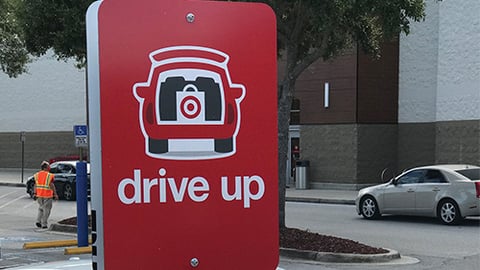Store Design of the Future
Predicting anything about the future of retail is always risky, but especially now. The nation and the retail industry continue to be profoundly impacted by COVID-19, and shopping patterns and shopper expectations have changed dramatically.
Key Takeaways
- In a post COVID-19 world, store designers will have to adapt to new consumer priorities, behaviors and expectations.
- Future retail locations will need to leverage technology to power touch-free interactions.
- Human engagement will still be an important factor in the retail experience, however.
Looking ahead, predicting exactly how COVID-19 will impact retail in the short and long run is fraught with uncertainty. However, there are some key areas where the lasting effects of COVID-19 seem reasonably clear, and one of the most significant relates to store design and the evolving in-store experience. Here’s what seven highly regarded design experts had to say about how retail experiences will change.
Melissa Gonzalez
CEO/ Founder, The Lionesque Group, and Partner/Stakeholder, MG2
“Retailers should use clear signage, but don’t forget about brand voice — layer in soothing and comforting tones and elements with instruction copy. Have a queuing management system in place (for both curbside and in-store transactions), and leverage technology to power touch-free interactions.
“We will see stores adapt to a more technologically advanced consumer base. Stores will need to seamlessly be able to serve numerous customer journeys — one that is more transaction-based, where the store serves as a fulfillment channel, one where the in-store experience is more experience-based, and one that satisfies a unified commerce experience where a customer can easily transition from online and offline experiences.
“The average front of house may decrease in square footage, while the average back of house will increase and logistical/operational planning will be even more important than it was before. The cash-wrap experience will evolve as checkout becomes more mobile and aspects like augmented reality will be more widely integrated.”
Jamie Cornelius
Executive Creative Director, ChangeUp
“I see two strategies moving forward: a stop-gap strategy to implement for the here and now, and one of innovating for the future. Looking at the long term, we will need to re-evaluate the moments along the customer journey and adapt to new consumer priorities, behaviors and expectations.
“Consider how to use the outside space and entry point more effectively, or even bring the outside in with more natural cues to put shoppers at ease. Rethinking the drive-thru is also a prime improvement opportunity. There’s so much potential for efficiency, experience and contactless payment enhancements, but also drive- thru-only locations could unlock even more potential.
“Bright lighting will be critical — primarily because dark, moody spaces have the perception of being unclean. Brightly lit areas will play a key role in creating open, more welcoming environments.
“Also, expect a boom in post-pandemic materials and finishes born out of necessity. There will be new takes on anti-microbial and hydrophobic surface finishes applied in new ways to new mediums. The key will be a balance of conveying to shoppers that they are in a pristine space, but without feeling sterile. Be intentional about where customers are placing their hands, and rethink how those spaces might come to life with a focus on materiality.
“Color and pattern always help bring people out of a funk. Use them to communicate the joy of shopping, infuse personality and get shoppers out of the survivalist mindset.”
Joseph Nevin
SVP, Development, Big Red Rooster (a JLL company)
“There are going to be dramatic changes — a result of overcompensating to accommodate immediate needs — that will overhaul current shopping environments and experiences. Some changes will be temporary as society eventually adjusts to the most effective and intuitive systems, but the need for catering to customers’ sense of safety and comfort will likely remain. Retailers must demonstrate and share their core values to empower both their shoppers and employees while appropriately addressing all touchpoints in the customer journey to ensure long-term future success.
“Right now, it’s all about providing visual cues that reinforce retailers’ commitment to safe shopping environments. It’s not enough to tell shoppers what you’re doing — they need to see how the measures are actively being implemented in order to feel comfortable and
develop a strong sense of loyalty. Editing assortments and lightening the sales floor to provide an open, intuitive space will be key in retailers’ expressing their editorial point of view across the store environment, products and experience to secure confidence and credibility with their customers.”
Alastair Kean
Development Director, Dalziel & Pow
“There will be some practical elements that brands will need to consider in order to ease anxieties and safeguard the health of customers and staff, and this may mean a more ‘hands-off’ shopping experience.
"We may see contactless processes and technologies extended further, self-service wherever possible, the introduction of wider aisles, one-way systems, and more curbside pickup and return options. Touchscreen technology in stores is likely to be reconsidered, perhaps in favor of voice-activated experiences.
“Brands will need to innovate and remain agile in order to serve in a safe and secure way whilst still delivering the convenience and magic that consumers are after.
“Having said that, consumers are likely to still want some element of a personal experience to contrast the loneliness of lockdown. Having a friendly face to discuss requirements with will arguably be more important than ever, and experiences driven by some form of human connection — perhaps on an emotional rather than a physical level — will be key.”
Emily Albright Miller
VP, Strategy and Insights, Big Red Rooster (a JLL company)
“The most salient needs that retailers should adjust to now are the consumers’ need to protect their personal space and avoid unnecessary contact with people and things. This requires retailers to rethink traffic patterns inside and outside of their stores, to embrace outdoor spaces, and to optimize for a completely touch-free journey.
“Through the implementation of any new solutions, it’s critical that retailers empower the consumer and make them feel in control. The more in control they feel, the more likely they will be to spend again.”
Ken Nisch
Chairman, JGA
“I’ve heard many people say that COVID-19 marks the end of the experience era. I would disagree. Yes, there will be more precautions. Expectations will rise on operators, whether they be restaurants, museums, theme parks or cruises, to operate under a higher standard, which will increase operating costs. Consumers will want to be reassured by the symbols, if not the realities, of heightened care and responsibility. Simple logistics such as flow control, distancing and separation will be even more scrutinized by guests.”
Justin Hill
Principal, MG2
“Focus on making shopping fun. Messaging should be in your voice, not simply clinical instructions. Graphics and signage can be encouraging while also informative. Look to create smiles and surprises along the journey. Also, iron out the kinks in your BOPIS and curbside pickup systems.
“The pandemic saw retailers of food and consumables spring into action with measures such as social-distancing signs, one-way-only aisles, plexiglass partitions and face-covering requirements. In the short run, these measures helped inspire trust and confidence among shoppers. To keep the momentum going will require rethinking the configuration of store exteriors and entry points, and a decluttering of fixtures to create space that will create a first impression for the shoppers’ experience.”
What’s Your Sign?
Retailers may also want to use digital interactions to be transparent with customers about how busy the store is and optimal times to visit, according to Jamie Cornelius, executive creative director at ChangeUp, with offices in Dayton, Ohio; Los Angeles; and Detroit.
“New in-store signage is going to be essential, but don’t become overly reliant on it,” Cornelius advises. “Be sure to not program shoppers to go on autopilot while in the store. Instead, make their experience a breath of fresh air and remind them of the joy of shopping.”
Shopping hasn’t been a joy for anyone the past six months, but retailers are a resilient lot, adept at satisfying shoppers’ evolving expectations. That has proved to be the case again as an industry and nation cope with COVID-19, placing new demands on store design experts to create next-generation experiences.











